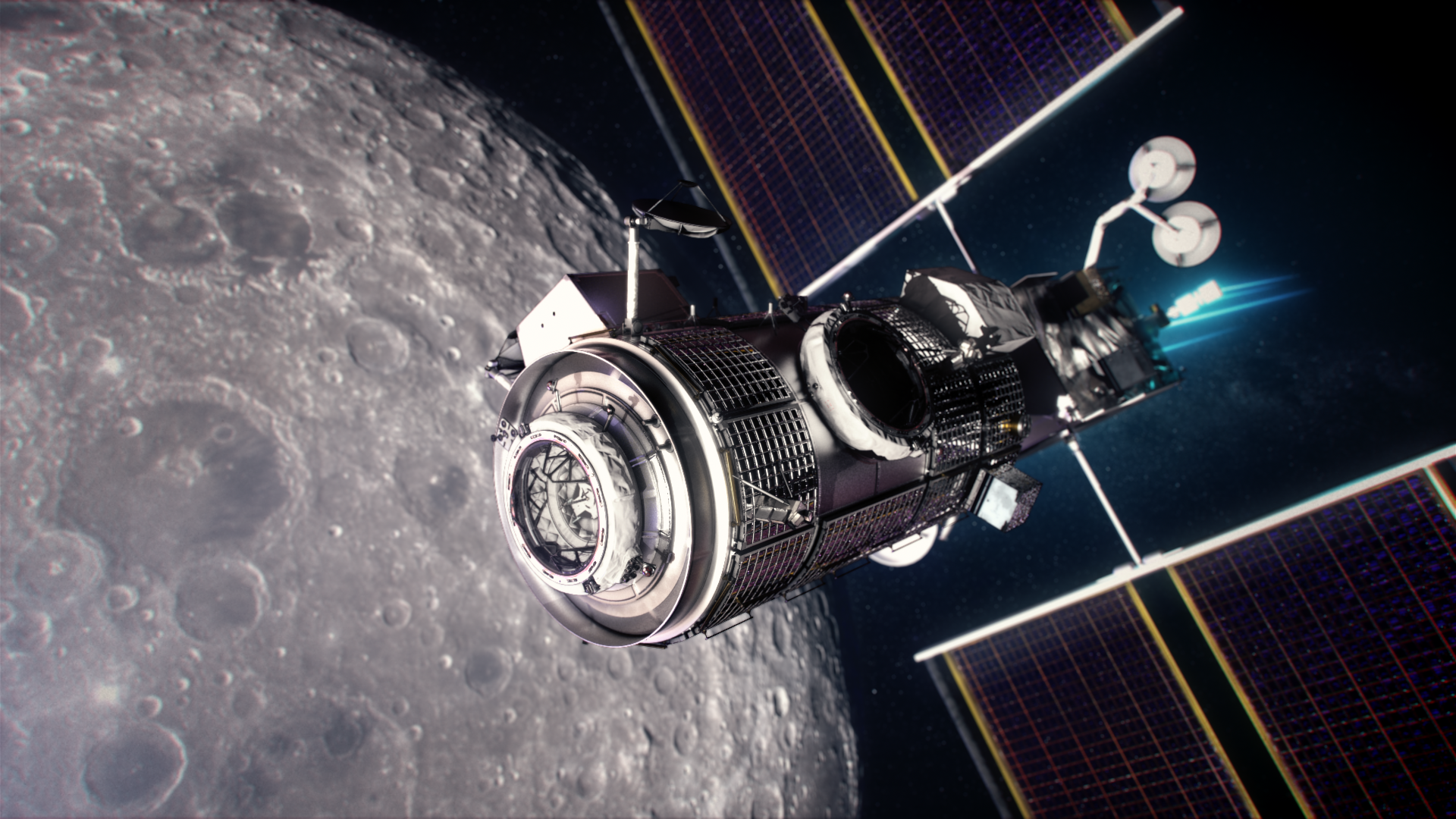Do We Need a Lunar Gateway?
Twelve people have walked on the moon, and the most recent was over 50 years ago. Now we are looking at a return to crewed missions to the moon using a space station called the Lunar Gateway. Gary Johnson just did some calculations that show that surprisingly the lunar Gateway would require a larger craft to land in the same sites as just launching directly from earth on a single rocket Apollo style.
 |
| Lunar Gateway concept. Photo credit: NASA |
Orbits are counter-intuitive. As astronaut Tom Jones said in his review in Popular Mechanics of the movie Gravity, "Sandra Bullock's minimally trained astronaut shoots for a space station a hundred miles away by lining up visually and blasting away with her thrusters. Where Isaac Newton rules, that gambit would put you farther behind your target. Rendezvous in reality is a complex orbital ballet, and applying human instinct and Kentucky windage always results in failure." In any given orbit there is only one speed, and the lower the orbit the faster it is. So thrusting toward a target to catch up actually increases the orbital altitude and causes the spacecraft to slow down.
The biggest difference between the planned Artemis missions to return to the moon and Apollo is that Artemis targets landing sites that are not on the moon's equator. To land at polar sites where there's a larger chance of water ice, ships need to change the plane of their orbit before they land on the moon. A "normal" circular orbit for a lunar spaceship starts around the moon's equator (because the moon's equator is on the same plane as the path from the Earth to the moon). To get to a polar orbit, the most-efficient path is to fall into a highly elliptical equatorial orbit (i.e. sometimes the ship is much closer or further to the moon), and change planes to polar at the furthest point. Once the correct plane is achieved, the ship can "circularize" the orbit from the ellipse to allow lunar landing operations.
With an Artemis "Lunar Gateway" station, the ship needs the capability to reach the orbit of the high-altitude station at the same time that the station reaches that point in its orbit. In addition to optimizing the ship's path and capabilities for two targets (moon landing and Earth re-entry), the ship must add the station as as third target. This drives additional mass (and expense and complexity) compared to an Apollo-style "everything going to the moon comes with the ship" approach.
Why might we use a station? Intuitively, it feels more efficient to "park" at the station, and that the station and might teach more lessons about getting to Mars, etc. As noted above, intuition misleads. And as Kelly Weinersmith and Zach Weinersmith wrote in A City on Mars, the lessons we need to learn on colonizing other planets and long-term living in space are actually better learned on and around Earth. "How do we create a closed environment with maximum recycling?" is actually an experiment we can do (and have done before) on Earth with lower risk. Reproductive and long-term effects on life can be tested on Earth (e.g. radiation exposure) or in low Earth orbit - the Moon or a station over the moon provide no incremental lessons. Lunar regolith is very different from Martian soil, so it's not a great analogue. And finally, the moon actually has very little water (compared to planets), so long-term mining of the water might quickly deplete it.
Return to the moon is useful for some short-term experiments or delivering long-term experiments, but long-term habitation is not easy or scientifically valuable compared to the alternatives. If the system is lighter and simpler without the Lunar Gateway, why use it?

Comments
Post a Comment